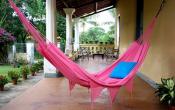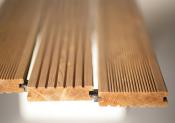Search
Login
Recommended
Tillage tools
Tillage is carried out throughout the time when the soil is not covered with snow.
Autumn and spring cultivation consists in digging the soil. For these activities, the most applicable are shovels, forks and rippers.
Shovel
Shovel is a universal tool. It can rightfully be considered tool N 1 for the garden plot. Shovels are different, they differ from one another by the length of the handle and the size of the blade.
For autumn soil preparation, a shovel is considered the best tool, because in winter, the soil should remain in a coarse state (the effect of frost will be most effective). It is possible to achieve a large-lumpy or lumpy soil structure only when digging with a shovel (when replacing a shovel with garden forks, the lumps of soil are destroyed and the cultivated land is soon compacted).
The choice of a shovel directly depends on who and for what work it is required. The length of the handle is selected based on the growth of the one who will use it. Digging shovel is recommended triangular in shape.
Before the start of soil cultivation, a shovel is selected, which, in addition to its correspondence to growth, will be convenient to work with. For example, for deep digging, a shovel with an average blade size is preferable.
When digging heavy soil, metal strips are attached to the upper edges of the blade (this is an extender for emphasizing the foot): working with such devices becomes less painful for the legs.
Hand cultivator
Spring digging with a cultivator is carried out after autumn tillage. A cultivator prepares the surface layer for land.
Rake
The rake is a handle with a metal nozzle, on which teeth are located at an angle of 90 °. The length of the nozzle is approximately 30 cm, the teeth are 5 cm. This tool is used to collect fallen leaves, old grass, for harrowing and loosening.
Simple rake can be improved. For this, two metal pins are required, the length of which exceeds the length of the rake teeth. One of the spikes is welded to the transverse strip of the metal nozzle. Taking it by the reference point, drill holes every 7-10 cm.
A thread is made on the second pin and inserted into one of the holes, secured with nuts. Thus, there is a division into beds. The position of the threaded pin can be changed by rearranging it into other holes. The farther the pins are from each other, the wider the distance between the rows will be.





